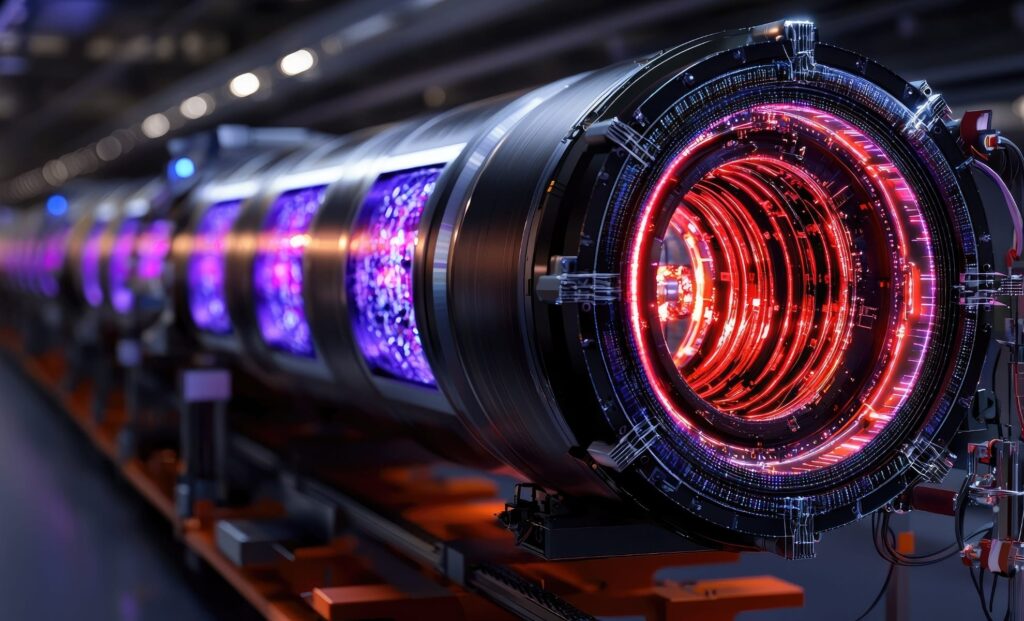In a lab at MIT, researchers have built a particle accelerator no bigger than a molecule. By targeting a radium monofluoride molecule with laser energy inside a vacuum, they observed electrons breaching the atomic nucleus—opening a new pathway for studying the hidden mechanics of matter.
This tiny setup challenges the assumption that massive machines are required to unlock the universe’s subatomic secrets. The molecule’s structure acts like a self-contained collider, providing high-precision insights into atomic behavior—no sprawling tunnels necessary.
Shrinking the Accelerator
Traditionally, investigating the smallest components of matter has required enormous infrastructure. The Large Hadron Collider spans 17 miles beneath the French-Swiss border, built precisely for this purpose. But MIT’s team found that by combining radium with fluoride to form radium monofluoride, the resulting molecule behaves like a miniature accelerator when hit with lasers.
The researchers measured the energy of radium’s electrons, noting that they shifted slightly when entering the nucleus. These changes revealed a glimpse into the nucleus’s magnetic field, something rarely accessed with such precision. PhD student Silviu-Marian Udrescu, said in a press statement, “the molecule acts like a giant particle collider and gives us a better chance to probe the radium’s nucleus.”

Why Radium Makes the Difference
The success of this molecular-scale experiment hinged on radium’s unusual shape. Most atoms are more or less spherical, but radium’s nucleus has a pronounced pear-shaped asymmetry. This distinctive structure allows researchers to explore violations of T (time) and CP (charge-parity) symmetries—phenomena that challenge the foundations of the Standard Model of physics.
Atoms, under this model, should not exhibit a permanent electric dipole moment (EDM). Yet pear-shaped nuclei like radium’s are thought to amplify the presence of EDMs by a factor of nearly 1,000. As reported by Popular Mechanics, this enhanced sensitivity could help scientists uncover clues about the universe’s matter-antimatter imbalance—one of the most persistent mysteries in physics since the Big Bang.
Peering Inside the Nucleus
The experiment did more than just confirm energy shifts. It showed that electrons could leave the nucleus carrying information—effectively acting as messengers of the atom’s internal structure. Ronald Fernando Garcia Ruiz, another MIT researcher on the project, said their findings lay “the groundwork for subsequent studies aiming to measure violations of fundamental symmetries at the nuclear level.”
Up to now, the experiments have been conducted with molecules in uncontrolled, random orientations at high temperatures. But the team is preparing the next phase: cooling the radium monofluoride molecules to fix their orientation in space. This added control would allow them to build a much clearer map of the atom’s magnetic and electric fields—turning the radium nucleus into one of the most precisely studied regions in atomic science.

